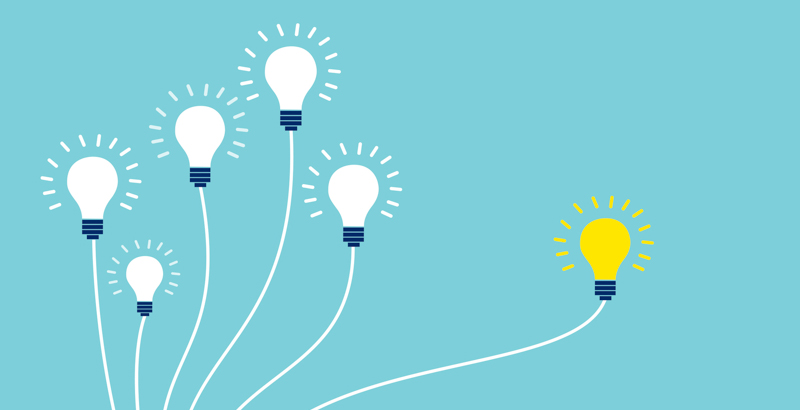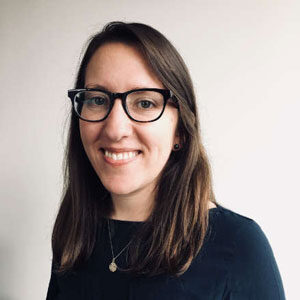Tracking How 232 Innovative Schools Are Challenging 5 Big Assumptions About American Education

Help fund stories like this. Donate now!
This school year, recovery is the name of the game in K-12 education. Although COVID-19 persists, schools have reopened and are focusing on getting students back on track.
But plenty of the challenges schools are tackling have long predated COVID. Indeed, schools are not just facing the need to recover from the pandemic — they must recover from a system of schooling that was never designed to provide high-quality learning opportunities for every student.
Fortunately, a diverse array of communities are working to reinvent schooling in pursuit of their visions for thriving young people and families. The learning environments they’re designing and redesigning don’t all look the same — in fact, far from it. But what they have in common is challenging key assumptions about schooling to create more equitable, joyful, and responsive learning environments that reflect community values and priorities.
Many of these learning environments are featured in the Canopy project, a nationwide effort lifting up knowledge from hundreds of organizations to build open data about schools that are innovating. Originally founded at the Christensen Institute, the Canopy is now stewarded by the Center on Reinventing Public Education and Transcend, and is fueled by participation from hundreds of organizations and schools.
The project’s existing dataset documents innovative practices in 232 schools, many of which had a track record of innovating even pre-pandemic. The rates at which schools report various unconventional practices clearly show that they are challenging a range of assumptions about what school is and should be.
Here are five of the big assumptions being challenged by Canopy innovators:
1.Learning Must Happen on a School Campus
First is the assumption that learning must happen inside school walls. For instance, Grand Rapids Public Museum High School in Michigan, the Science and Math Institute (SAMi) in Tacoma, Washington, and Verdi EcoSchool in Melbourne, Florida, anchor students’ learning experiences in local institutions like museums and zoos. They are the vanguards of more flexible systems that blend schools with community institutions to create rich learning opportunities.
2.Virtual Learning Is Subpar
Second is the notion that virtual learning is inherently inferior. Washtenaw Alliance for Virtual Education, for example, is a virtual program that students in Washtenaw County, Michigan, can enroll in as an alternative to their home districts. In the school’s interdisciplinary, project-based, “enriched virtual” approach, students join in-person meetings and workshops a couple days a week. This allows them to build relationships and get direct support, while experiencing greater flexibility and autonomy. Virtual learning programs like these are valiantly challenging the short-sighted conviction that just because fully in-person learning is best for most students, it should be mandated for all students. These programs are also showing that students and families who value more time at home or more flexibility in how they spend their days don’t have to give up face-to-face contact with classmates or caring adults.
3. Equity = ‘Achievement Gap’
Third is the assumption that equity just means closing the academic achievement gap. In fact, half of Canopy school leaders shared in surveys that one of their school’s reasons for innovating was to counteract inequities hard-wired into systems. Rooted School, for example, aims to close the wealth gap for Black students in four communities around the country, and works to ensure that students graduate with a college acceptance in one hand and an offer for a job with growth potential in the other. And Ke Kula ʻo Samuel M. Kamakau, a laboratory public charter school in Kaneohe, Hawaii, immerses students in the Hawaiian language as part of its mission to create a culturally responsive learning environment.
4.Academics Are Distinct From Social-Emotional Supports
Fourth is the assumption that academic learning can be separated from whole-child supports. Among schools in the Canopy database, 71% report integrating social and emotional learning throughout the curriculum. At Ember Charter School for Mindful Education, Innovation, and Transformation, for example, educators teach mindfulness practices and use trauma-informed techniques to nurture students’ critical thinking and disrupt the traditional narrative about rigor and high expectations as the main ways to drive academic learning. And Shawnee High School, in rural Oklahoma, has worked with community partners to provide telehealth services for students who lack access or would otherwise have to miss school for an appointment. These schools and many others are embracing the research showing that learning depends on other critical building blocks of wellness and social and emotional development.
5. Passions Are For Electives (or Afterschool)
Fifth is the assumption that extracurriculars and electives are the only appropriate place for students to explore their personal interests and passions. For instance, all students at schools in the Big Picture Learning network pursue internships based on interests they want to explore. These internships aren’t extras—they’re a core part of every student’s learning experience and contribute to graduation requirements. Highline Big Picture and Gibson Ek High School, two Big Picture schools in Washington State, were important advocates for the state’s first credit waiver program, which enabled the schools to award credit for internships instead of the number of hours students spent in a class. Other schools are building on lessons they learned during the pandemic about how to engage students around their interests and passions: North Edgecombe High School, in North Carolina, is building a new curriculum and schedule in which part of the school day is dedicated to interest-driven projects.
What’s Next for the Canopy Project
Studying schools like these is critical because a myopic focus on COVID recovery will fail to address the fundamental inequities and outdated assumptions that are baked into the K–12 system. As CRPE and Transcend guide the Canopy project forward, we hope these innovative learning environments can demonstrate what’s possible in a sector struggling with exhaustion, burnout, and a long road ahead to deliver on public education’s promise to every American student.
We plan to update and expand the Canopy dataset to feature information about innovative learning environments that challenge our current definitions of school, including unconventional alternatives that many families flocked to during the pandemic. CRPE’s learning pods research and Transcend’s research on innovative learning environments outside school systems suggest these spaces—often led or co-led by families and community leaders—are worth watching as they expand the notion of what could be possible in public education. We’ll also be supporting Canopy users, including school and system leaders, education advocates, and policymakers, to get value from the data by taking a closer look at schools to learn from, and making sense of trends in school practice around the country.
Here’s how teachers and education organizations across the country can help:
—Use Canopy’s interactive data portal to search for innovative schools by region, level, focus, and more.
—Suggest nominators for the Canopy project, especially organizations with insight into innovative learning environments that deserve more recognition than they are currently getting.
—Get in touch with the project leads to discuss a customized workshop or roundtable using the Canopy data to answer the questions that matter most to your community or organization.
Along with the hundreds of schools that contribute to the Canopy project, we’re on a mission to continue tracking and uplifting schools’ efforts not just to recover, but to reinvent toward learning environments that are equitable, joyful, and responsive to students’ strengths, preferences, and needs.
This piece originally appeared at CRPE.org. Chelsea Waite is a senior researcher at the Center on Reinventing Public Education
Help fund stories like this. Donate now!

;)
